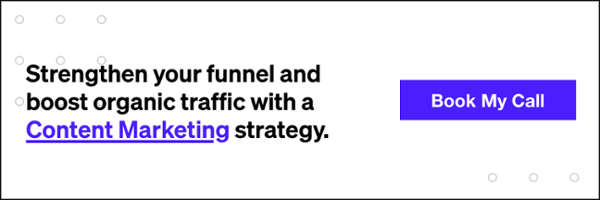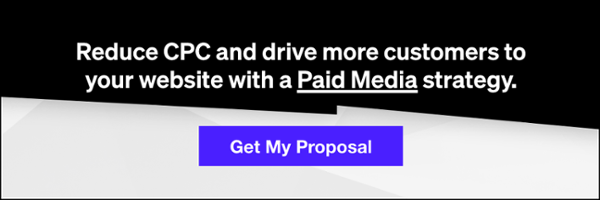What is Native Advertising?
Have you ever seen someone at a costume party who’s not wearing a costume? They stick out like a sore thumb, and it’s a little off-putting. That’s why marketers use something called native advertising. It’s the advertiser’s way of wearing a costume to fit into their environment. Simply put, it’s advertising that looks and feels the same as the other content on a page or feed.
By definition, native advertising is a paid media that adapts to the form and function of its environment. For example, let’s say you’re running a paid YouTube advertisement that plays before a user video. It wouldn’t make much sense to run an ad that’s just a single image for 15 seconds. Why? Because it’s YouTube, the whole site is video based. In other words, you want your company to be wearing a video costume to the video party. The reason marketers take this approach is to maintain the user experience. If the format or function of an advertisement drastically shifts the user’s experience it can be jarring. Jarring enough for the user to steer clear of an obvious sales attempt. This is why pop-ups are so offensive, and why people can’t move fast enough to hit the ‘X’ button.
Native advertising is also favored by the companies who sell the ad space. That way their websites and platforms don’t appear cluttered with a mass variety of discordant advertisements. You can see this practice when you look at ads inside major digital platforms such as Twitter, Facebook, YouTube, Instagram, Forbes, New York Times, Wall Street Journal, USA Today, etc.
Related: How Much Does PPC Cost?
The goal of Native advertising is not to tell a big story or catch your attention with shock value and disruption. It’s to speak naturally to your target audience in a way that seamlessly flows into what they are already doing. It’s also a great way to insert a brand into new environments without coming off aggressively. And it allows a brand to be relevant to a specific subset of consumers by speaking a language that they are familiar with.
Every digital platform and website is different, so naturally, native advertising is a media of many hats. Here are the different types.
Types of Native Advertising
According to the Interactive Advertising Bureau, there are 6 core interactive ad formats that are currently used in the native advertising landscape. Below are the 6 different types.
In-Feed Units – Sponsored content lives within the regular feed or index of a publication or social platform. As the user surfs original content they are also intermittently seeing sponsored content throughout the stream. It blend’s quite seamlessly — a very popular example is Instagram. The ads look almost identical to user-generated content. The only difference is usually a call to action, which allows a company to determine the next location they want to funnel consumers (i.e., Website, social profile, e-commerce store).
Paid Search Units – These ads are listings that appear towards the top of a users search results. They are implemented as a part of search engine marketing and within individual websites. Although it varies between domains, usually the ads appear at the top of a page and target searchers based on their geographical location, previous search queries, and personal preferences
Recommendation Widgets – This is a great way for companies to generate leads and initiate a customer funnel. They appear towards the bottom of a page usually following an article. It’s a group of links often under the heading, “You May Also Like,” or “Recommendations For You.” The goal of these ads is to draw targeted users back to a brand’s website after they’ve just ingested some kind of relevant content. Ideally, the content recommendation engines should promote brands that are a logical next step for the user to click on. For example, if a user just read an article on meditation techniques, a logical brand to appear in the recommendation section would be a yoga apparel company. Recommendation widgets are not only a good way to generate leads, it also establishes a relationship with the publisher, who is ideally an adjacent brand within the same industry — that’s how you network and market at the same time.
Promoted Listings – Primarily used by e-commerce stores to highlight their featured or sponsored products. For example, when you’re on Amazon and you see a popular product pop up on the homepage. It puts product promotion before the brand. As a company the main benefit that this type of advertising offers is cost structure — many sites will only charge you for paid promotional listings if a sale is generated through the ad. It’s similar to pay per click advertising, but with an actual sale as the threshold for compensation, it’s a much better deal for the company buying the ad.
IAB Standard Ads with “Native” Element Units – These ads look a little more like regular ads you might find on a website. Meaning, they don’t blend into the platform’s form and function quite as seamlessly. However, they still have some sort of element that ties them to the content such as, same industry, adjacent products, or similar target demographic. For example, a meal-kit delivery service advertising on a cooking website. This type of ad is meant to serve the publishers needs as well as the brand. The publisher is providing value to its readers by offering them a product that builds upon their own.
Custom – When an ad doesn’t follow a specific format but it still retains some kind of relevant context. This is when the publisher and advertiser create custom parameters based on their respective customer funnels, and what will mutually benefit the both of them.
Related: Keyword Research Tips for the PPC Beginner
Benefits of Native Advertising
The numbers don’t lie when it comes to native advertising.
- Studies show that users are upwards of 50% more likely to look at native ads than regular display ads. And 25% more consumers look at in-feed ads.
- They are improving the likelihood someone will actually make a purchase, and/or take a liking to the brand by 18%. Which is understandable, because advertising can be considered a nuisance when not positioned correctly. You don’t want the consumer’s first impression of your brand to be a negative one. Taking the native approach is like starting a conversation with someone who shares a mutual friend — there’s already an element of commonality and trust.
- The average recall of brands is 2x more likely than traditional banner ads.
- By creating partnerships with publishers and platforms, you’re able to engage a targeted audience who are already trusting users. These means instant trust points for your brand.
- Click through rates are much higher compared to banners and display ads. Also, after a user clicks on your native ad you have the option of retargeting them with a subsequent promotion that motivates them towards the purchase funnel.
Guidelines for Good Native Advertisements
- Look at the language and structure of other successful companies on publications and social media. There’s a specific headline structure that varies across different industries. Find what seems to work well in your field and then offer a value or highlight what’s unique about your brand.
- If your ad involves an article or a significant amount of copy, tease the article with enough copy so the reader learns what the article is about, but still wants to continue reading. Don’t go over the top with this, or you risk coming off as click-bait.
- Label your content clearly and accurately. Do not be misleading or aggrandize your content unnecessarily.
- Avoid creating different versions of the same ad. If consumers notice, it comes off as desperate and a little spammy.
Providing value is the overall best way to structure your native ads. If people see a solution to a problem or an intriguing exploration of a relevant topic they will be more likely to engage.
Examples of Value:
- Tutorials such as DIY’s, How-to’s, Tips & Tricks are all great examples of content that users are highly likely to engage with.
- Educating – Providing innovative information or an informed perspective on a new or relevant topic.
- Reviews – These days customers don’t trust carefully worded brand copy nearly as much as they trust their consumer peers. Offering user-generated insight into your brand is the digital version of word of mouth marketing.
- Visually interesting content such as humorous, stylized, or compelling videos is an engaging way to funnel users towards your brand.
Many brands make the mistake of underestimating the savvy of the average consumer. For the most part, people nowadays are hip to the tricks and techniques of aggressive advertising. The bottom line is, no one wants to feel like they’re being sold something. That’s why the practice of native advertising has become so popular. It allows brands to slip into the conversation seamlessly, and many consumers may not even be aware they’re looking at an ad. And even if they do know, they’re much more likely to engage with it — because when native advertising is done right, the content is relevant, valuable and in line with specific consumer needs.



















